
Near downtown Cuajiniquil, roughly 30 minutes from La Cruz, we find a landscape of contrasts. On one hand, the small leaves of the green mangrove trees grow with strength and, on the other, there is a semi-desert scenery with few signs of the life that was once here.
Community resident Argerie Cruz says that more than 30 years ago, a salt cooperative existed on the very spot we are standing. The company went broke and left the mangrove swamp destroyed due to the large quantities of salt it absorbed.
Despite connecting with the sea, mangrove swamps depend on freshwater to develop, so an increase in the levels of salt in the water alters the ecosystem’s physiological processes.
“We have to bring this back to life. It’s like a dessert,” says resident Carmen Cortés, pointing to a tree that was crystalized by the excessive salt.
This isn’t the only community in the country that lost its mangrove. In fact, a 2018 report by the National System of Conservation Areas (SINAC) says that between 1980 and 2013 Costa Rica lost 43% of its mangrove swamps, the equivalent of 27,000 soccer fields.
Activities like the building salt ponds and deforestation for farming and ranching are the main culprits of the loss of mangrove swamps in the country, according ot the report. Records indicate that salt extraction has been going on since 1500, but it wasn’t until 1977 the country regulated it with the Salt Extraction Law.
Estela Alemán is the president of a group of 23 women who want to reverse the loss of mangrove swamps. She says she and other women in the community sell corn bread, chicken and tamales to get by. With the mangrove swamp, their options for new sources of income would increase.
Argerie Cruz and Carmen Cortés also belong to this group. About two years ago, they started to work on restoring the 17 acres of mangrove swamps destroyed by the salt evaporation pond. They believe the mangrove swamp will help them grown their income because of the amount of sealife it produces.
This is the first pilot plan in the country led by Sinac in coordination with the Neotropical Foundation, the Autonomous University of Campeche’s Gulf of Mexico Ecological, Fishing and Oceanography Institute and financing from the French Fund for the Global Environment. It’s also taking place in the Puntarenas Wetland and at the National Terraba-Sierpe Wetlands.
What we are doing is reforesting (planting mangrove trees) and digging channels that allow the water to flow quickly into the mangrove swamp via tides,” said Guanacaste Conservation Area biologist María Marta Chavarría.
The women in the group and other members of the community were hired by institutions to dig ditches and plant the mangrove plants, among other tasks.
“We can say the work is like using a scalpel (because of the precision required) because we can’t use machinery. That’s why we need to work as a community,” Chavarría said.
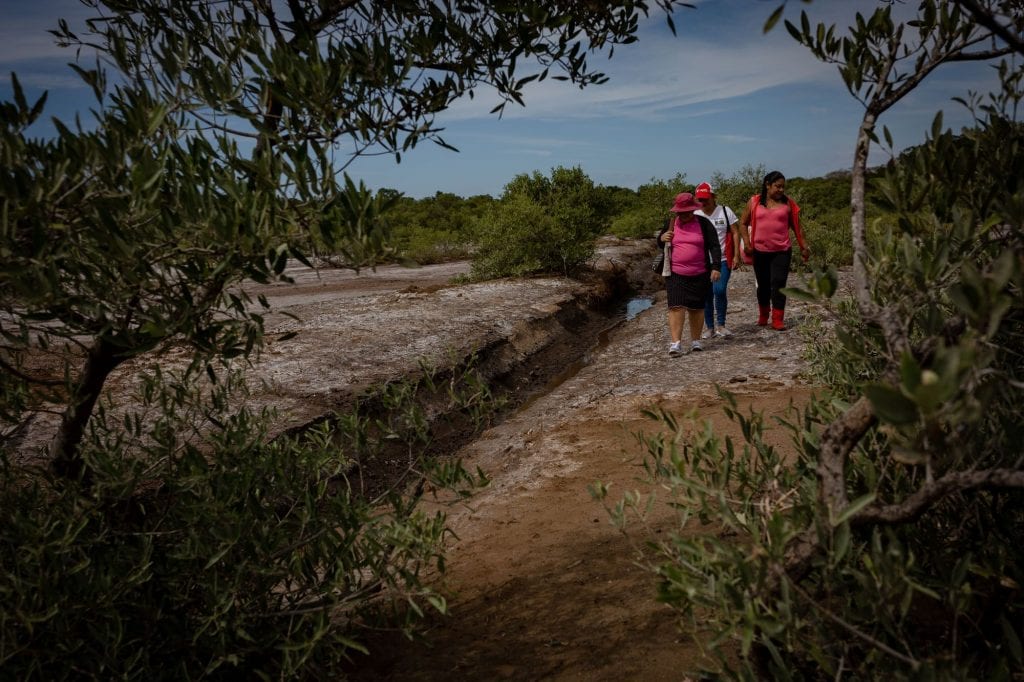
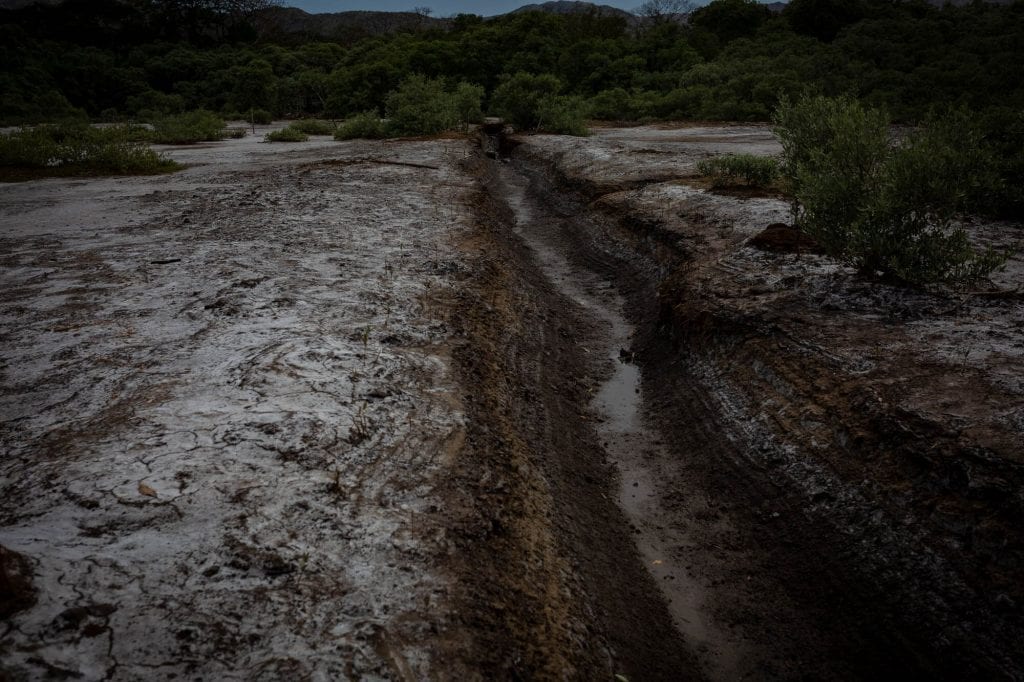
Without the Mangrove Samp, There is No Fishing
The benefits of mangrove swamps are environmental as well as economic. A report by the Costa Rican Fishing and Agriculture Institute (Incopesca) says every 17 acres of mangrove swamp feeds 70 families thanks to the extraction and sale of sealife.
This is one of the main reasons the Cuajiniquil community is restoring it. “If there are no mangrove swamps, there is no fishing,” says Alemán, adding the mangrove swamps breed fish and, well kept, allow for a permanent source of food.
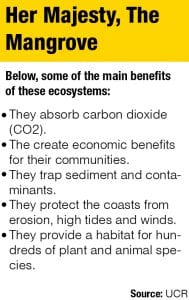 “We are seeking a balance. We eat what the mangrove swamp produces, and we also protect it. In the end, it’s our obligation because we ended up destroying what we had,” he says.
“We are seeking a balance. We eat what the mangrove swamp produces, and we also protect it. In the end, it’s our obligation because we ended up destroying what we had,” he says.
In other communities in Guanacaste, the benefits of mangrove swamps on peoples’ wallets is evident. In the Gulf of Nicoya, these ecosystems generate half of the clams sold nationally, an activity that nearly 1,000 people perform, 40% of them women.
These ecosystems also serve as protective zones for the coasts from strong winds and high tides.
The 2017 State of the Nation of Sustainable Human Development report de la says mangrove swamps provided a buffer against the impact of Hurricane Otto, absorbing a large part of the rains and winds brought by the storm. In Guanacaste, Otto hit six of 11 cantons and was characterized by the authorities as the most destructive and deadly hurricane to ever hit the country.
Wetlands retain the excess precipitation and run-off and retain sediments,” the document says.
The Right Path
Chavarría from the ACG says that, in two years, the project has had visible results, such as the number of mangrove bushes that continue to grow and the water that runs through the channels.
“Understanding the importance of the mangrove swamp, you see that and it gives you hope,” Chavarría says.
The biologist says this same process can be replicated in other mangrove swamps in the province and across the country. With this experience, he believes they can eventually develop a national mangrove swamp restoration protocol.
The country committed to restoring 1,800 acres of mangrove ecosystems in the next two years, according to the National Biodiversity Strategy. But the effort won’t be worth anything if the country doesn’t stop the “degradation” of resources, says Jacklyn Rivera, program director of the National Wetlands Program.
“Today, management arrives late when the change is too evident. If we had a more periodic monitoring system it gives management more time to act. But now, we don’t realize until we’ve lost 120 acres of mangrove swamp,” Rivera says.
Meanwhile, Alemán, Cruz and Cortés imagine what the future will be like once the mangrove swamp is restored. “Can you imagine creating a market for food, like a restaurant, and use what the mangrove swamp gives us? That’s what we are working for, Alemán says.


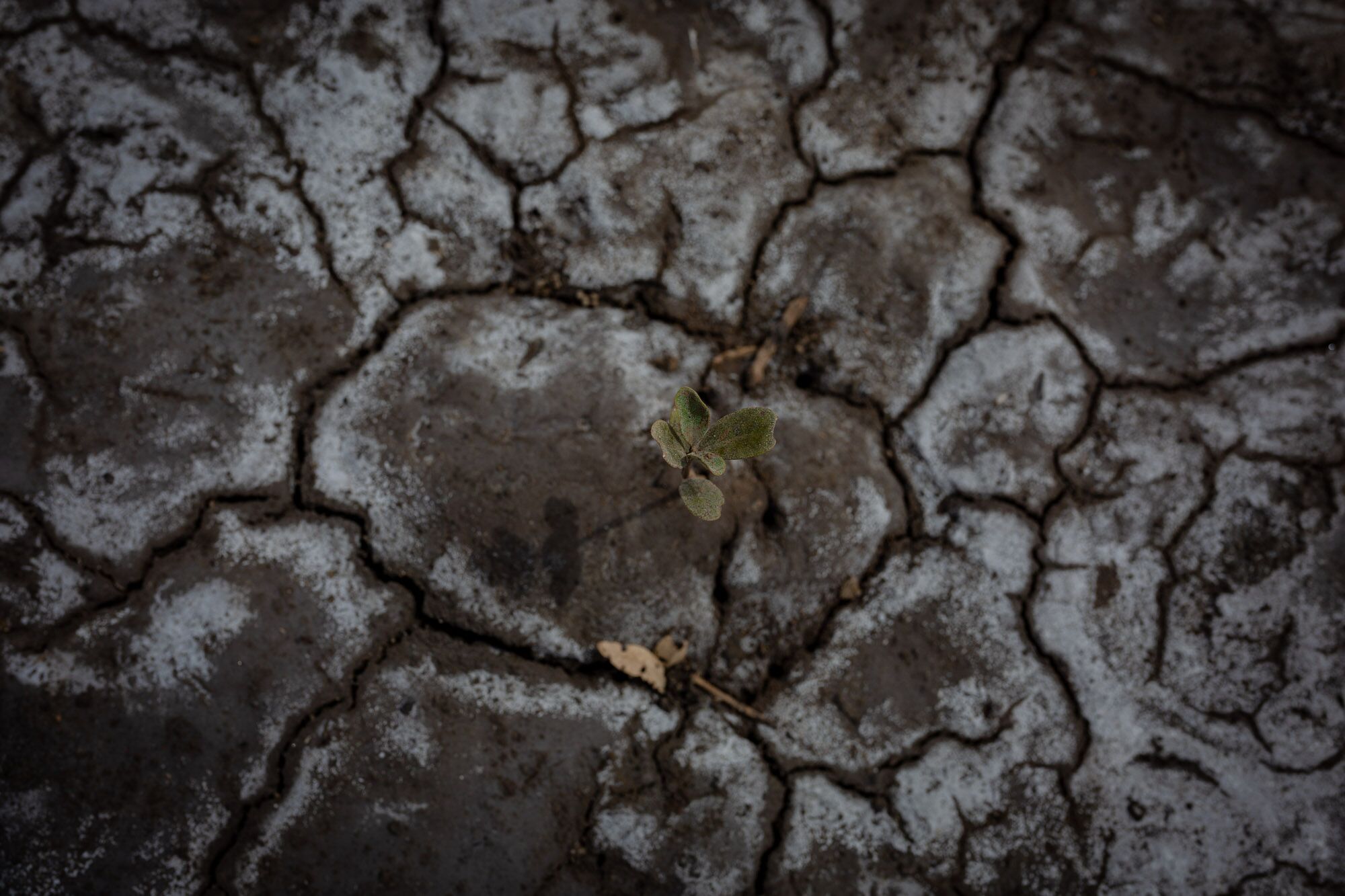
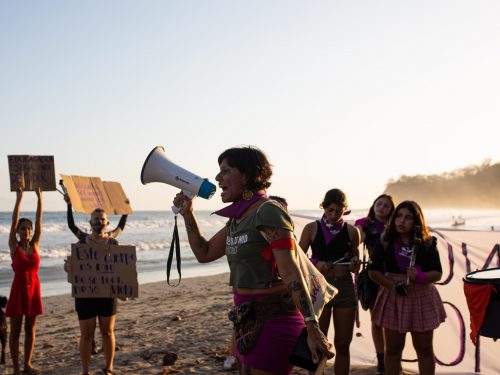



Comments